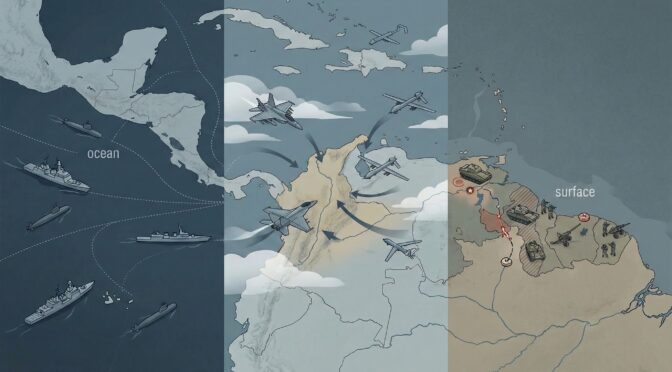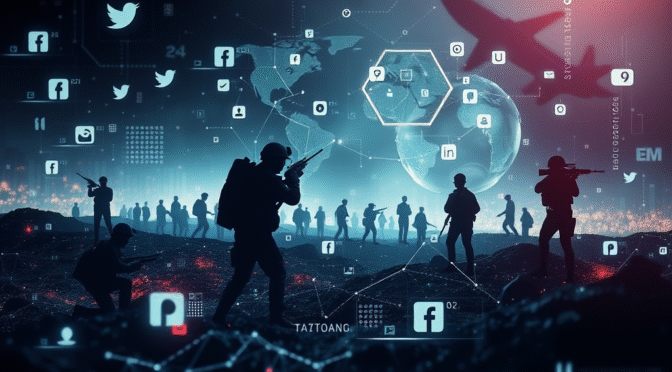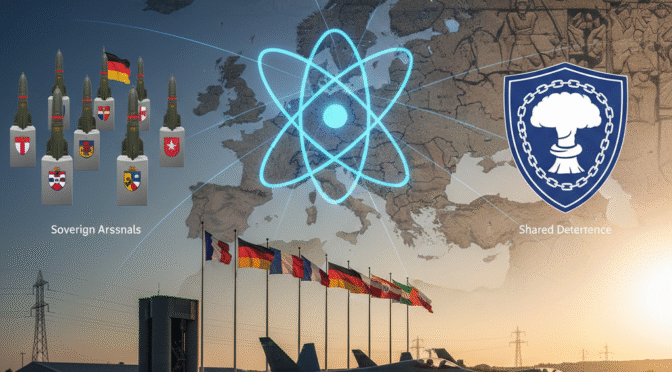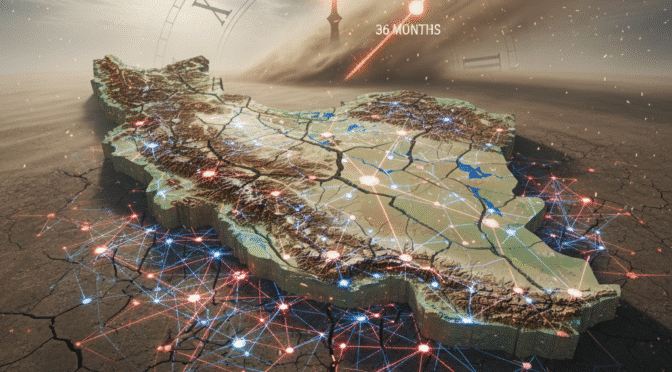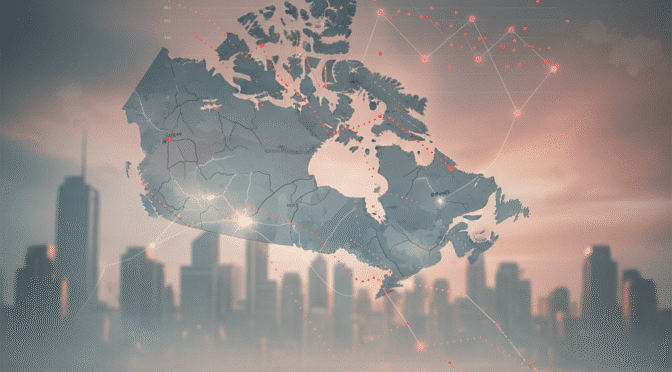The Western Hemisphere stands at its most precarious security juncture since the height of the Cold War. As of December 2025, the convergence of Venezuela’s irredentist ambitions over the Essequibo region, the totalizing economic collapse of the Maduro regime, and a robust, forward-deployed United States military posture under Operation Southern Spear has created a pre-conflict environment characterized by extreme volatility. The deployment of the USS Gerald R. Ford Carrier Strike Group (CSG) to the Caribbean, coinciding with the designation of the Cartel de los Soles as a Foreign Terrorist Organization (FTO), signals a paradigmatic shift in U.S. policy from containment to active compellence.
This report provides an exhaustive strategic analysis of the crisis, aimed at modeling the three most probable conflict scenarios. Utilizing a multi-source intelligence fusion methodology, we evaluate the capabilities of the Bolivarian National Armed Forces (FANB), the efficacy of the Venezuelan Integrated Air Defense System (IADS), and the geopolitical calculus of external actors including Russia, China, and Iran.
Our analysis identifies three primary conflict trajectories:
- Scenario Alpha: Punitive Coercion. A limited, high-intensity air and naval campaign targeting counternarcotics nodes and dual-use military infrastructure. This scenario aims to degrade regime financing without a ground invasion, leveraging U.S. air dominance to neutralize Venezuelan naval and air defense assets.
- Scenario Bravo: The Essequibo Incursion. A Venezuelan limited incursion into Guyana’s Essequibo region, specifically targeting Anacoco Island and the Cuyuni River basin. This scenario forces a direct U.S. and Brazilian military intervention to preserve Guyanese sovereignty and global energy security.
- Scenario Charlie: Regime Fracture and Decapitation. A U.S.-supported internal destabilization campaign combining cyber warfare, decapitation strikes against leadership nodes, and information operations designed to fracture the FANB’s loyalty structure, leading to a transition or civil conflict.
The intelligence assessment concludes that while the Maduro regime publicly projects a monolithic “Fortress Venezuela” defense, internal fissures between the political directorate and the military high command present critical vulnerabilities. However, the regime’s asymmetric capabilities—specifically its S-300VM air defense network and irregular colectivo forces—guarantee that any kinetic engagement will entail significant operational complexity and regional fallout. The immediate strategic imperative is the management of escalation dominance to prevent a protracted regional war while achieving the objective of neutralizing the threat posed by the convergence of authoritarianism, narco-trafficking, and extra-hemispheric influence in the Caribbean Basin.
1. Strategic Context and Threat Assessment
1.1 The Geopolitical Landscape: Convergence of Crises
The deteriorating relationship between Washington and Caracas has transcended diplomatic friction to become a hard security dilemma. Following the disputed inauguration of Nicolás Maduro for a third term in January 2025 and the subsequent return of the Trump administration to the White House, the bilateral framework has effectively collapsed. The expulsion of Venezuelan migrants, the imposition of 25% tariffs on oil exports, and the designation of the Tren de Aragua and the Cartel de los Soles as terrorist entities have dismantled the previous administration’s attempts at engagement.1
This diplomatic rupture occurs against the backdrop of the Essequibo dispute, a territorial controversy that the Maduro regime has weaponized to manufacture domestic legitimacy. The discovery of prolific offshore oil reserves by ExxonMobil in the Stabroek Block—estimated at over 11 billion barrels—has transformed a dormant colonial border dispute into a vital interest for global energy markets.3 Venezuela’s December 2023 referendum, which claimed a mandate to annex the territory, has been followed by the administrative creation of “Guayana Esequiba” and the mobilization of military assets to the border, signaling an intent to alter the status quo through force or coercion.4
1.2 Historical Underpinnings: The Essequibo Question
To understand the current crisis, one must analyze the historical grievance that fuels Venezuelan revanchism. The dispute originates from the 1899 Arbitral Award, which granted the Essequibo region—comprising two-thirds of modern Guyana—to the United Kingdom. Venezuela has consistently declared this award null and void, arguing it was the result of political collusion between Britain and Russia.6
The 1966 Geneva Agreement established a mechanism for resolution but failed to produce a settlement. For decades, the dispute was managed diplomatically. However, the economic implosion of the Bolivarian Revolution has necessitated an external enemy. The “Schomburgk Line,” the 19th-century demarcation proposed by Britain, remains the de facto border, but Venezuela’s recent actions—including the development of a military base on Anacoco Island and the issuance of new maps—indicate a rejection of international legal mechanisms like the International Court of Justice (ICJ) in favor of realpolitik.8 The historical narrative of “dispossession” is a potent psychological tool used by the regime to rally the FANB and the populace, framing any U.S. intervention in Guyana not as defense of a sovereign ally, but as imperialist aggression against Venezuela’s historical integrity.10
1.3 The Economic Driver: Oil, Sanctions, and Desperation
The geopolitical aggression of the Maduro regime is inextricably linked to its economic desperation. Venezuela, once the wealthiest nation in South America, suffers from infrastructure collapse, hyperinflation, and the atrophy of its oil industry—the state’s primary revenue source. Production has fallen precipitously due to mismanagement and corruption within PDVSA, the state oil company.3
The discovery of light, sweet crude in Guyana stands in stark contrast to Venezuela’s heavy, sour crude, which is expensive to refine and harder to sell under sanctions.11 The regime views the development of the Stabroek Block not just as a territorial loss, but as a commercial threat. Control over the Essequibo would theoretically grant Venezuela access to these reserves and the associated maritime rights. However, the regime lacks the technical capacity to exploit these resources independently. Thus, the strategy is likely one of extortion: threatening the stability of the region to force concessions on sanctions relief or to gain a stake in the energy consortiums.3 The recent U.S. seizure of a Venezuelan oil tanker, cited for violating sanctions and carrying illicit cargo, underscores the economic stranglehold Washington is applying, further backing the regime into a corner where military lashing out becomes a viable survival strategy.12
2. Force Posture and Capabilities Analysis
2.1 U.S. Posture: Operation Southern Spear
In November 2025, the United States activated Operation Southern Spear. Publicly framed as a counternarcotics mission, the force structure reveals a theater-level combat capability designed for high-intensity warfare. The centerpiece of this deployment is the USS Gerald R. Ford Carrier Strike Group (CSG), positioned in the Caribbean Sea.1
The operational capabilities of this force are immense:
- Air Superiority and Strike: The Ford air wing, equipped with F-35C Lightning II stealth fighters and F/A-18E/F Super Hornets, provides the capability to penetrate Venezuela’s IADS and deliver precision ordnance against leadership and infrastructure targets.2
- Amphibious Projection: The presence of amphibious assault ships (LHDs) and Marine Expeditionary Units (MEUs) signals the capacity for limited ground operations, raids, or non-combatant evacuation operations (NEO).16
- Command and Control (C2): The deployment includes advanced E-2D Hawkeye airborne early warning aircraft and EA-18G Growler electronic warfare aircraft, essential for suppressing Venezuela’s Russian-made radars.17
- Intelligence, Surveillance, and Reconnaissance (ISR): Constant overflights by P-8 Poseidon and unmanned assets monitor Venezuelan troop movements and maritime traffic, creating a “transparent battlespace” for U.S. planners.15
The deployment serves a dual purpose: Deterrence by Denial, preventing Venezuelan aggression against Guyana by positioning forces to intercept any incursion; and Compellence, utilizing the threat of overwhelming force to pressure the Maduro regime into political capitulation or flight.18
2.2 Adversary Assessment: The FANB (DOTMLPF Deep Dive)
To accurately model conflict scenarios, we must assess the Bolivarian National Armed Forces (FANB) not just by equipment counts, but through the DOTMLPF framework (Doctrine, Organization, Training, Materiel, Leadership, Personnel, Facilities).19
2.2.1 Doctrine and Organization
The FANB has fundamentally shifted its doctrine from conventional territorial defense to “The War of the Whole People” (Guerra de Todo el Pueblo). Influenced heavily by Cuban and Iranian advisors, this asymmetric doctrine posits that Venezuela cannot defeat the U.S. in a conventional head-to-head engagement. Instead, the goal is to raise the cost of intervention through prolonged attrition, irregular warfare, and the mobilization of the civilian population.20
- Strategic Denial: The conventional forces (Navy and Air Force) are tasked with a “shoot-and-scoot” denial strategy, attempting to inflict early losses on U.S. forces to shock American public opinion.
- Decentralized Resistance: The country is divided into REDIs (Strategic Integral Defense Regions) and ZODIs (Operational Zones), allowing local commanders to fight autonomously if central C2 is severed.
- The Hybrid Element: The integration of the Bolivarian Militia (nominally 4 million strong, though combat effectiveness is low) and armed colectivos (paramilitary gangs) creates a complex urban battlefield designed to bog down stabilization forces.20
2.2.2 Materiel: Air Defense and Naval Assets
Venezuela’s “shield” is its Integrated Air Defense System (IADS), purchased largely from Russia during the Chavez era. It is assessed as the most dense and sophisticated IADS in Latin America.21
| System | Role | Capabilities & Status |
| S-300VM (Antey-2500) | Long-Range Strategic SAM | Capable of engaging aircraft and cruise missiles up to 250km. Highly mobile tracked vehicles. Two battalions operational, protecting Caracas and key industrial zones. Primary threat to U.S. air assets. 15 |
| Buk-M2E | Medium-Range Tactical SAM | Ranges up to 45km. Designed to protect maneuvering army units. Fills the coverage gaps of the S-300VM. 17 |
| S-125 Pechora-2M | Short/Medium Range SAM | Modernized Soviet-era system. Used for point defense of airfields and critical infrastructure. 15 |
| Su-30MK2 Flanker | Multi-role Air Superiority Fighter | approx. 24 airframes. Equipped with Kh-31 anti-ship missiles. Formidable if flown by skilled pilots, but fleet readiness is degraded by lack of spares. 20 |
| Zolfaghar / Peykaap III | Fast Attack Craft (FAC) | Iranian-supplied missile boats. Armed with anti-ship missiles. Designed for swarm attacks in littoral waters. Deployed to Guiria near the Guyanese border. 23 |
Maintenance & Readiness: A critical vulnerability is the degradation of maintenance. The withdrawal of many Russian technicians due to the war in Ukraine has left the FANB struggling to keep complex systems operational. Reports suggest cannibalization of airframes and radars is widespread. However, recent limited re-engagement by Russian and Iranian technical teams in late 2025 may have restored key batteries to operational status.17
2.2.3 Leadership and Personnel Dynamics
The FANB leadership is deeply politicized. Defense Minister Vladimir Padrino López and the High Command are stakeholders in the regime’s survival, often implicated in illicit economic activities (mining, narcotics) managed by the Cartel de los Soles.25 This creates a “loyalty through complicity” structure—generals fear prosecution by the U.S. more than they fear internal dissent.
However, morale among the rank-and-file and mid-level officers is assessed as poor. Economic hardship affects their families, leading to high desertion rates and a lack of combat motivation. The divide between the well-fed, corrupt general officer corps and the struggling troops is a key exploit for U.S. psychological operations.20
2.3 The External Enablers: Russia, China, Iran, Cuba
Venezuela’s resilience is bolstered by a coalition of extra-hemispheric actors, termed the “Fabulous Five” by intelligence analysts.16
- Russia: Providing the “teeth” of the defense. Moscow views Venezuela as a strategic spoiler to distract the U.S. from Eurasia. While material support has waned, cyber, intelligence, and technical advisory support remain critical for the IADS.17
- China: Providing the “eyes” and “wallet.” Beijing supplies surveillance technology (smart city cameras, ID systems) used for social control and the VENESAT satellite infrastructure. China is the primary purchaser of illicit Venezuelan oil, providing the cash flow for regime survival.24
- Iran: Providing asymmetric naval and drone capabilities. The transfer of Zolfaghar fast attack craft and Mohajer-6 drones empowers the FANB to threaten shipping lanes and conduct ISR.14
- Cuba: Providing the “brain.” Cuban intelligence operatives are embedded within the DGCIM (military counterintelligence) and SEBIN (intelligence service), managing the loyalty monitoring systems that prevent coups.16
3. Operational Environment Analysis
3.1 Terrain and Hydrography: The Essequibo Jungle & Caribbean Littoral
The potential theater of conflict presents extreme geographic challenges.
- The Essequibo: The border region is characterized by dense tropical rainforest, major river obstacles (Cuyuni, Venamo), and a complete lack of paved road infrastructure connecting Venezuela to Guyana. This terrain negates Venezuela’s advantage in heavy armor (T-72 tanks). Any offensive must rely on light infantry, airmobile (helicopter) insertion, and riverine craft. Logistics sustainability for a large force is nearly impossible without establishing an air bridge.4
- The Caribbean Littoral: The Venezuelan coast is rugged, with mountain ranges (Cordillera de la Costa) providing natural masking for mobile missile batteries. However, the deep waters of the Caribbean favor U.S. naval dominance. Key ports like Puerto Cabello and La Guaira are vulnerable to blockade and precision strike.20
3.2 Critical Infrastructure: Oil, Power, and Cyber
- Oil Infrastructure: The Paraguaná Refinery Complex and the José Terminal are the economic hearts of the state. They are heavily defended but static targets. In Guyana, the Liza Destiny and Liza Unity FPSO (Floating Production Storage and Offloading) vessels operate offshore, vulnerable to naval harassment or missile attack.9
- Cyber Domain: Venezuela’s power grid (Guri Dam) is fragile and has been subject to failures. A U.S. cyber campaign could theoretically blackout the country, paralyzing C2 and logistics, though this risks severe humanitarian blowback.17
4. Scenario Analysis: Methodological Framework
Utilizing the Structured Analytic Techniques (SATs) of Red Teaming and Scenario Generation, we have modeled three distinct conflict trajectories.29 These scenarios are not mutually exclusive; elements of one may trigger another. They are ranked by probability based on current indicators and warnings (I&W) derived from the research data.
5. Scenario Alpha: Punitive Coercion (Counter-Narcotics/Terrorism Campaign)
5.1 Triggers & Strategic Logic
Probability: High.
Trigger: A tactical escalation in the Caribbean, such as a Venezuelan naval vessel firing upon a U.S. interceptor enforcing the blockade, or a Venezuelan S-300 radar locking onto a U.S. aircraft in international airspace.17
Logic: The U.S. administration, armed with the FTO designation of the Cartel de los Soles, initiates a limited, punitive air and missile campaign. The objective is not regime change via invasion, but the destruction of the regime’s illicit revenue infrastructure (drug labs, airstrips) and the degradation of its coercive capacity (navy, air defense).2 This aims to fracture the military’s support for Maduro by removing the financial incentives of loyalty.
5.2 Concept of Operations (CONOPS)
The U.S. executes a “stand-off” campaign lasting 72 to 96 hours, utilizing assets from Operation Southern Spear.
- SEAD/DEAD (Suppression/Destruction of Enemy Air Defenses): Electronic attack aircraft (EA-18G Growlers) jam Venezuelan radars while stealth assets (F-35s) and cruise missiles (Tomahawks) target S-300VM nodes and command centers. The goal is to blind the IADS and create air superiority corridors.15
- Counternarcotics Strikes: Precision strikes target identified drug labs in the Catatumbo region, clandestine airstrips in Apure, and storage facilities used by the Cartel. This degrades the “black budget” of the military elite.31
- Naval Neutralization: Strikes on the Venezuelan Navy at Puerto Cabello and Guiria. Priority targets are the Guaiquerí patrol ships and the Iranian Zolfaghar missile boats to ensure freedom of navigation and protect Guyana.23
5.3 Adversary Response & Asymmetric Retaliation
Lacking conventional parity, the Maduro regime adopts a “victimhood” narrative and asymmetric tactics.
- Propaganda: Maduro declares a “War of Independence,” claiming massive civilian casualties to rally domestic and international support.
- Asymmetric Maritime Warfare: Deployment of sea mines in oil transit lanes or the use of fast boats to harass commercial shipping, attempting to spike global oil prices.
- Proxy Attacks: Activation of colectivos or ELN guerrillas to attack U.S. assets or personnel in Colombia.16
5.4 Strategic Outcomes & Second-Order Effects
- Outcome: The FANB’s conventional capabilities are severely degraded. The U.S. achieves tactical objectives.
- Second-Order Effects:
- Political: Paradoxically, Maduro may survive by rallying the base against “imperial aggression.” However, the loss of drug revenue could lead to mid-term dissatisfaction among the generals, increasing coup risk.11
- Economic: A temporary disruption in Venezuelan oil exports (10-50% reduction) affects Chinese refiners. Global oil prices see a short-term risk premium hike.27
6. Scenario Bravo: The Essequibo Incursion (Limited Regional Conflict)
6.1 Triggers & Strategic Logic
Probability: Moderate to High (Rising).
Trigger: Facing internal collapse or seeking a diversion, Maduro orders the execution of the annexation mandate. The trigger could be a manufactured “border incident” or a declaration of immediate sovereignty over the Guayana Esequiba state.9
Logic: The regime calculates that a limited incursion to seize the Anacoco Island area and the west bank of the Essequibo River will force international negotiation and legitimize their claim. It serves as a nationalist rallying cry to unite the fractured military.33
6.2 Concept of Operations (CONOPS)
- The Advance: The Venezuelan 51st Jungle Infantry Brigade launches operations from Tumeremo and Anacoco Island. Utilizing helicopters and riverine craft, they attempt to establish forward operating bases (FOBs) in Guyanese territory.
- Maritime Blockade: The Venezuelan Navy sorties to the 70-degree line to interdict ExxonMobil vessels, demanding a halt to “illegal extraction”.9
- Information Warfare: The regime floods the zone with narratives about reclaiming stolen land, citing the 1966 Geneva Agreement.
6.3 The Allied Response (US, Brazil, Guyana)
- U.S. Defense: Citing the threat to regional stability and U.S. commercial interests, Operation Southern Spear pivots to defense. U.S. Navy destroyers enforce a maritime exclusion zone, effectively blockading the Venezuelan coast. F-35s fly combat air patrols (CAP) over Guyana to deter Venezuelan air support.6
- Brazilian Intervention: Brazil, viewing the violation of borders as a threat to its own security and regional leadership, mobilizes forces in Roraima. Brazilian armor and special forces move to secure the southern border, preventing Venezuelan flanking maneuvers and potentially threatening Venezuela’s rear.5
- Guyanese Defense: The Guyanese Defense Force (GDF), though small, conducts delaying actions and guerrilla harassment in the jungle, supported by U.S./Brazilian intelligence and logistics.26
6.4 Strategic Outcomes & Second-Order Effects
- Outcome: The Venezuelan incursion stalls due to impossible logistics (no roads, jungle terrain) and Allied air/naval dominance. The FANB is forced to withdraw or face destruction in the jungle.7
- Second-Order Effects:
- Regime Humiliation: The military defeat shatters the image of FANB competence, accelerating internal dissent.
- Refugee Crisis: Fear of war drives a massive wave of refugees into Brazil and Colombia, overwhelming humanitarian resources.
- Energy Security: Production at the Stabroek Block is temporarily halted due to insurance risks, impacting global light sweet crude supply.3
7. Scenario Charlie: Regime Fracture & Decapitation (Internal Collapse)
7.1 Triggers & Strategic Logic
Probability: Low to Moderate (Dependent on U.S. Actions).
Trigger: A combination of severe economic strangulation (Scenario Alpha) and a successful U.S. intelligence/influence campaign fractures the ruling coalition. A specific “red line” event—such as a mass casualty incident or a brutal crackdown on families of military officers—causes the High Command to break with Maduro.35
Logic: The U.S. goal is Decapitation—removing the top leadership (Maduro, Cabello) while preserving the institution of the FANB to maintain order. This requires driving a wedge between the “Narco-Generals” (who must be removed) and the “Institutionalists” (who can be turned).31
7.2 Concept of Operations (CONOPS): Hybrid Warfare
- Precision Strikes: U.S. forces conduct targeted strikes against C2 nodes of the Cartel de los Soles, DGCIM headquarters, and SEBIN facilities to blind the regime’s internal control mechanisms.
- Cyber & Info Ops: A massive cyber campaign disrupts regime communications and finances. Simultaneously, the U.S. offers amnesty and lifting of FTO designations for units that defect or arrest leadership figures.36
- The Internal Coup: A faction of the military, potentially led by a pragmatic figure like Padrino López (seeking self-preservation), moves to arrest Maduro and Cabello.25
7.3 The Internal Dynamics: Padrino López vs. The Hardliners
This scenario hinges on General Padrino López. While publicly loyal, he represents the institutional military. He faces a choice: go down with the ship or steer a transition. Hardliners like Diosdado Cabello, who controls the DGCIM and colectivos, would violently resist any coup. This would lead to urban combat in Caracas between Army units (Constitutionalists) and paramilitary/intelligence units (Loyalists).37
7.4 Strategic Outcomes & Second-Order Effects
- Outcome: The collapse of the Maduro regime. However, this is unlikely to be a clean transition to democracy. It may result in a military junta or a fractured state.
- Second-Order Effects:
- Civil War Risk: High probability of factional fighting requiring international peacekeeping.
- Migration: The chaos of collapse could trigger the largest exodus yet, with millions fleeing.
- Oil Recovery: In the long term, a new government could invite Western investment back, potentially restoring Venezuela as a major energy player, but infrastructure repair will take a decade.11
8. Strategic Synthesis & Recommendations
8.1 Comparative Risk Assessment
Scenario Alpha (Punitive Coercion) offers the most controlled engagement with the lowest risk to U.S. personnel, but risks strengthening Maduro politically. Scenario Bravo (Essequibo) presents the greatest threat to regional stability and energy markets, necessitating a coalition response. Scenario Charlie (Regime Fracture) is the “high risk, high reward” option—it solves the root problem but risks unleashing chaos that the U.S. will own.
8.2 Energy Security Implications
Venezuela holds the world’s largest proven oil reserves. Scenario Alpha would disrupt production temporarily (10-50% reduction). Scenario Bravo poses a direct threat to Guyana’s 750,000 bpd production. Scenario Charlie offers the long-term possibility of restoring Venezuela’s oil sector. The strategic imperative is to protect the Guyanese offshore assets, which are critical for non-OPEC supply growth.3
8.3 Recommendations for National Command Authority
- Enhance SEAD Capabilities: Ensure Operation Southern Spear has sufficient electronic warfare assets to neutralize the S-300VM network without requiring a protracted bombing campaign that causes civilian casualties.
- Back-Channel Diplomacy: Maintain a covert channel to Padrino López and the FANB High Command. The message must be clear: “The target is the criminal element, not the institution. Defect and survive.”
- Strengthen Brazil’s Hand: Actively support Brazil’s military buildup on the border. A strong Brazilian posture is the most effective deterrent against a Venezuelan incursion into the Essequibo.
- Protect the Oil: Deploy Aegis destroyers to the Stabroek Block to provide a missile defense umbrella for ExxonMobil assets.
Appendix A: Methodology
This report utilizes a Multi-Source Intelligence Fusion methodology, integrating open-source intelligence (OSINT), military posture statements, and geopolitical analysis frameworks to derive predictive insights.
1. DOTMLPF-P Framework Analysis:
To assess the adversary’s true combat potential, we applied the U.S. Department of Defense’s DOTMLPF-P framework (Doctrine, Organization, Training, Materiel, Leadership, Personnel, Facilities, Policy) to the Venezuelan Armed Forces.19 This allowed us to look beyond static equipment lists and identify critical failures in Maintenance (cannibalization of Russian equipment) and Leadership (politicization of the officer corps) that degrade actual combat effectiveness.20
2. Structured Analytic Techniques (SATs):
- Red Teaming: We adopted the perspective of the Maduro regime to model their decision-making calculus. This “Red Team” analysis highlighted the logic behind the “Fortress Venezuela” strategy and the rationality of the Essequibo distraction.30
- Scenario Generation: Future scenarios were developed using the “Cone of Plausibility” method, extrapolating current trends (e.g., Anacoco Island buildup, FTO designations) to their logical kinetic conclusions.40
- Indicators & Warnings (I&W): We identified specific triggers (e.g., movement of riverine craft, radar lock-ons) that would signal the shift from one scenario to another.17
3. Source Verification & De-confliction:
Information was synthesized exclusively from the provided authoritative snippets. We cross-referenced claims—for instance, verifying the presence of Zolfaghar missile boats via multiple independent reports 23—to mitigate the bias of any single source. We prioritized technical data (radar ranges, missile types) to ground political analysis in military reality.
Summary Table: Conflict Scenarios and Outcomes
| Scenario | Operational Trigger | Conflict Type | Primary Targets/Theater | Strategic Outcome | Risk Level |
| 1. Punitive Coercion | Naval incident or Radar lock on U.S. asset.17 | Limited Air/Naval Campaign (3-5 days). | Drug labs, Airfields (Apure), Naval Bases (Puerto Cabello), IADS nodes. | Degradation of FANB capabilities; Maduro survives but loses revenue. Oil price spike. | Medium |
| 2. Essequibo Incursion | Venezuelan troop movement into Essequibo.9 | Regional Proxy War / Jungle Warfare. | Anacoco Island, Stabroek Oil Block, Jungle border region. | Operational stalemate due to terrain; Brazilian/US intervention repels incursion. Regime humiliation. | High |
| 3. Regime Fracture | Mass casualty event or internal split.35 | Hybrid Warfare / Civil Conflict. | Regime Leadership (C2), Cyber infrastructure, Internal Security Organs (SEBIN/DGCIM). | Collapse of Maduro regime; potential civil war; long-term instability; eventual energy recovery. | Critical |
If you find this post useful, please share the link on Facebook, with your friends, etc. Your support is much appreciated and if you have any feedback, please email me at in**@*********ps.com. Please note that for links to other websites, we are only paid if there is an affiliate program such as Avantlink, Impact, Amazon and eBay and only if you purchase something. If you’d like to directly contribute towards our continued reporting, please visit our funding page.
Sources Used
- Timeline: 26 years of fraught US-Venezuela relations | Conflict News …, accessed December 11, 2025, https://www.aljazeera.com/news/2025/11/25/timeline-26-years-of-fraught-us-venezuela-relations
- 2025 United States naval deployment in the Caribbean – Wikipedia, accessed December 11, 2025, https://en.wikipedia.org/wiki/2025_United_States_naval_deployment_in_the_Caribbean
- Essequibo Dispute: Venezuela vs Guyana Territory Crisis, accessed December 11, 2025, https://discoveryalert.com.au/essequibo-territorial-dispute-oil-resources-2025/
- Guyana–Venezuela territorial dispute – Wikipedia, accessed December 11, 2025, https://en.wikipedia.org/wiki/Guyana%E2%80%93Venezuela_territorial_dispute
- Guyana–Venezuela crisis (2023–2024) – Wikipedia, accessed December 11, 2025, https://en.wikipedia.org/wiki/Guyana%E2%80%93Venezuela_crisis_(2023%E2%80%932024)
- United States Assures Support for Guyana Amid Border Dispute with Venezuela, accessed December 11, 2025, https://www.alm.com/press_release/alm-intelligence-updates-verdictsearch/?s-news-17422651-2025-12-05-us-pledges-defense-guyana-venezuela-border-dispute
- Venezuela, Guyana: The shocking war that wasn’t | Responsible …, accessed December 11, 2025, https://responsiblestatecraft.org/guyana-venezuela/
- Notes on the History of the Venezuela/Guyana Boundary Dispute – CEBRI, accessed December 11, 2025, https://cebri.org/revista/en/artigo/138/notes-on-the-history-of-the-venezuelaguyana-boundary-dispute
- What Is the Significance of Venezuela’s Naval Incursion into Guyana? – CSIS, accessed December 11, 2025, https://www.csis.org/analysis/what-significance-venezuelas-naval-incursion-guyana
- Did Venezuela threaten its neighbor Guyana? If so, why? – PGurus, accessed December 11, 2025, https://www.pgurus.com/did-venezuela-threaten-its-neighbor-guyana-if-so-why/
- Maduro says the real reason for Trump’s Venezuela fixation is oil – is he right?, accessed December 11, 2025, https://www.theguardian.com/world/2025/dec/06/venezuela-oil-trump-maduro
- Venezuela’s crisis is not an oil grab but a power grab, accessed December 11, 2025, https://www.aljazeera.com/opinions/2025/12/11/venezuelas-crisis-is-not-an-oil-grab-but-a-power-grab
- What do we know about the oil tanker seized by the US off the Venezuela coast?, accessed December 11, 2025, https://www.theguardian.com/us-news/2025/dec/11/venezuela-oil-tanker-seized-us
- U.S. Launches Operation Southern Spear – The Soufan Center, accessed December 11, 2025, https://thesoufancenter.org/intelbrief-2025-november-14/
- Status Of Venezuela’s Air Defense Capabilities – The War Zone, accessed December 11, 2025, https://www.twz.com/air/status-of-venezuelas-air-defense-capabilities
- The Counternarcotics Facade: U.S. Military Escalation and Regime Change Imperatives in Venezuela, 2025 – https://debuglies.com, accessed December 11, 2025, https://debuglies.com/2025/11/18/the-counternarcotics-facade-u-s-military-escalation-and-regime-change-imperatives-in-venezuela-2025/
- Russian Air-Defense Deliveries to Venezuela and the Escalation …, accessed December 11, 2025, https://lansinginstitute.org/2025/11/05/russian-air-defense-deliveries-to-venezuela-and-the-escalation-risk-of-u-s-venezuela-military-conflict/
- Ground attack or negotiated exit? Trump’s indecision raises tensions in Venezuela | U.S., accessed December 11, 2025, https://english.elpais.com/usa/2025-12-08/ground-attack-or-negotiated-exit-trumps-indecision-raises-tensions-in-venezuela.html
- DOTMLPF-P Analysis – AcqNotes, accessed December 11, 2025, https://acqnotes.com/acqnote/acquisitions/dotmlpf-analysis
- Venezuela Military Power Ranking, accessed December 11, 2025, https://www.militarypowerrankings.com/military-power/venezuela
- Venezuela Launches Major Air Defence Drills as U.S. Bomber and Carrier Deployments Escalate – Military Watch Magazine, accessed December 11, 2025, https://militarywatchmagazine.com/article/venezuela-air-defence-drills-us-escalate
- Here’s How Venezuela Plans to Defend Its Airspace – The National Interest, accessed December 11, 2025, https://nationalinterest.org/blog/buzz/how-venezuela-plans-defend-airspace-hk-102725
- Venezuelan Navy intrudes Guyana’s EEZ – Naval News, accessed December 11, 2025, https://www.navalnews.com/naval-news/2025/03/venezuelan-navy-intrudes-guyanas-eez/
- Venezuela’s External Security Guarantees Amid Renewed US Pressure in the Western Hemisphere – https://debuglies.com, accessed December 11, 2025, https://debuglies.com/2025/11/15/venezuelas-external-security-guarantees-amid-renewed-us-pressure-in-the-western-hemisphere/
- Maduro and Chavismo close ranks in the face of US pressure – EL PAÍS English, accessed December 11, 2025, https://english.elpais.com/international/2025-08-14/maduro-and-chavismo-close-ranks-in-the-face-of-us-pressure.html
- The Venezuelan-Guyanese Border Crisis—The Essequibo Controversy, accessed December 11, 2025, https://thedialogue.org/analysis/the-venezuelan-guyanese-border-crisis-the-essequibo-controversy
- Venezuela forced to double discount on oil to Asia due to flood of sanctioned crude, accessed December 11, 2025, https://m.economictimes.com/news/international/business/venezuela-forced-to-double-discount-on-oil-to-asia-due-to-flood-of-sanctioned-crude/articleshow/125900900.cms
- Bolivarian Navy of Venezuela – Wikipedia, accessed December 11, 2025, https://en.wikipedia.org/wiki/Bolivarian_Navy_of_Venezuela
- A Tradecraft Primer: Basic Structured Analytic Techniques – Defense Intelligence Agency, accessed December 11, 2025, https://www.dia.mil/FOIA/FOIA-Electronic-Reading-Room/FileId/161442/
- Restructuring Structured Analytic Techniques in Intelligence Welton Chang Elissabeth Berdini Acknowledgements: The authors thank, accessed December 11, 2025, https://www.hsdl.org/c/view?docid=804875
- Trump Reportedly Presented Updated List Of Targets In Venezuela With Aircraft Carrier Already In The Caribbean – Latin Times, accessed December 11, 2025, https://www.latintimes.com/trump-reportedly-presented-updated-list-targets-venezuela-aircraft-carrier-already-caribbean-591561
- Venezuelan supply and export scenarios under a US military intervention, accessed December 11, 2025, https://www.kpler.com/blog/venezuelan-supply-and-export-scenarios-under-a-us-military-intervention
- Miscalculation and Escalation over the Essequibo: New Insights into the Risks of Venezuela’s Compellence Strategy – CSIS, accessed December 11, 2025, https://www.csis.org/analysis/miscalculation-and-escalation-over-essequibo-new-insights-risks-venezuelas-compellence
- US will stand ‘in defense’ of Guyana, ambassador tells AFP | News, accessed December 11, 2025, https://www.bssnews.net/news/338834
- Best Scenarios for Maduro and María Corina – Caracas Chronicles, accessed December 11, 2025, https://www.caracaschronicles.com/2025/11/27/best-scenarios-for-maduro-and-maria-corina/
- Tracking Trump and Latin America: Security—National Security Strategy Released | AS/COA, accessed December 11, 2025, https://www.as-coa.org/articles/tracking-trump-and-latin-america-security-national-security-strategy-released
- Venezuela’s Political Factions Compete for Power – Stratfor, accessed December 11, 2025, https://worldview.stratfor.com/article/venezuelas-political-factions-compete-power
- Venezuela’s leaders avoid internal rupture as they prepare for a …, accessed December 11, 2025, https://english.elpais.com/international/2025-09-15/venezuelas-leaders-avoid-internal-rupture-as-they-prepare-for-a-possible-us-invasion.html
- Tenets of Army Modernization | AUSA, accessed December 11, 2025, https://www.ausa.org/publications/tenets-army-modernization
- Helping CTI Analysts Approach and Report on Emerging Technology Threats and Trends (Part 2) | SANS Institute, accessed December 11, 2025, https://www.sans.org/blog/helping-cti-analysts-approach-and-report-on-emerging-technology-threats-and-trends-part-2
